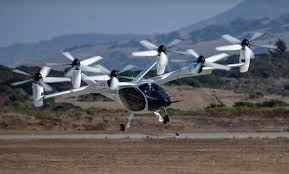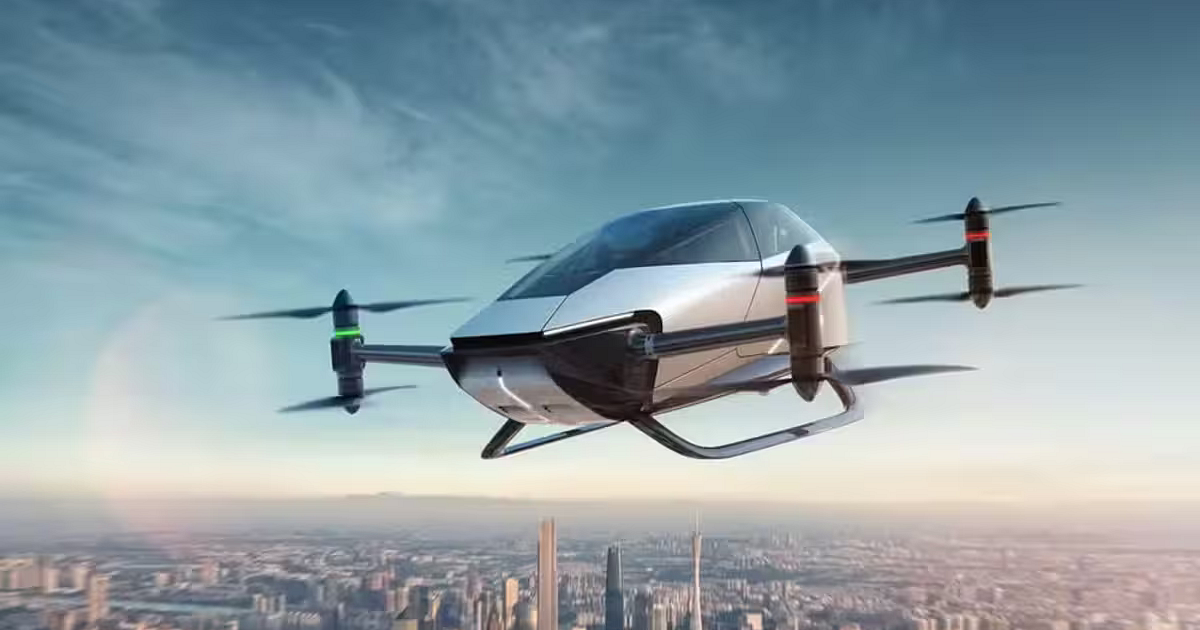Now Reading: “Dubai’s Electric Air Taxis: The End of Road Traffic Jams 2025?”
-
01
“Dubai’s Electric Air Taxis: The End of Road Traffic Jams 2025?”
“Dubai’s Electric Air Taxis: The End of Road Traffic Jams 2025?”

Table of Contents
Dubai, the city famous for its futuristic skyline, luxury lifestyle, and technological advancements, is once again making global headlines. This time, it’s for a new mode of transport that could change the way people travel forever—electric air taxis.
These flying taxis, also called eVTOLs (electric Vertical Take-Off and Landing vehicles), are not science fiction anymore. Dubai’s government, along with private companies, is actively working to bring these airborne vehicles to life. But can these electric air taxis really replace cars, buses, and trains? Let’s find out.
What are Electric Air Taxis?

Electric air taxis are small aircraft that can carry two to four passengers. They are designed to fly short distances within a city or between nearby cities. These taxis don’t need a runway because they take off and land vertically, just like a helicopter. But unlike helicopters, they are fully electric, quieter, and more environment-friendly.
Companies like Joby Aviation, Volocopter, and Archer Aviation are already testing such vehicles in different parts of the world. Dubai wants to be one of the first cities to make this dream a reality.
Dubai’s Big Plan for Air Taxis
Dubai’s Road and Transport Authority (RTA) has confirmed plans to introduce electric air taxis by 2026. The RTA has even released concept images of “vertiports”—special stations where air taxis will pick up and drop off passengers.
The goal is to connect key parts of Dubai, such as Dubai International Airport, Downtown Dubai, Dubai Marina, and other business hubs, using air taxis. Instead of spending 45 minutes in a car during traffic, travelers could reach their destination in just 10 to 15 minutes.
Why Does Dubai Need Electric Air Taxis?

Dubai has some of the world’s worst traffic congestion during peak hours. Thousands of cars crowd the roads daily, causing delays and pollution. The city’s population is growing, and so is the number of tourists every year. By 2030, Dubai aims to welcome 25 million visitors annually.
Electric air taxis could reduce pressure on the roads, cut down pollution, and make commuting faster and easier. These taxis will also use green energy, supporting Dubai’s vision to become a zero-emission city by 2050.
Benefits of Electric Air Taxis
- Faster Travel: No more wasting time in traffic jams. A trip that takes 40 minutes by car may take only 10 minutes by air taxi.
- Environment-Friendly: Since they run on electricity, air taxis produce zero carbon emissions.
- Less Noise: Modern air taxis are quieter than helicopters, making them suitable for use even in busy city areas.
- Safety: These vehicles come with modern safety systems, including backup motors, auto-landing features, and collision-avoidance technology.
- Tourism Boost: Tourists would love the chance to enjoy aerial views of Dubai while traveling.
Challenges to Overcome
While the idea sounds exciting, there are some serious challenges before air taxis become part of daily life:
- High Cost: At first, only wealthy people or tourists may afford to ride air taxis. Prices may need to drop to make them popular among regular commuters.
- Regulations: Flying vehicles need strict air traffic control to avoid accidents. Dubai will need to set up new laws and systems to manage the airspace.
- Infrastructure: Special vertiports need to be built across the city. It will take time and money to make these available in key locations.
- Public Trust: People must feel safe using these taxis. Education and testing will be required to win the public’s trust.
Will Air Taxis Replace Cars, Buses, and Trains?
Experts believe that electric air taxis won’t fully replace traditional transport like cars or trains anytime soon. Instead, they will add to the transport network, giving people more choices.
For example:
- Business travelers may use air taxis to reach meetings faster.
- Tourists may prefer air taxis for a unique city view.
- Emergency services could use air taxis to transport patients quickly.
But for daily travel like going to the supermarket or school, most people will still use cars, buses, and metros for now.
The Future is in the Air
Dubai’s leaders are serious about turning this dream into reality. They want the city to be the first in the world to offer commercial air taxi services. The first flights could start as early as 2026, making Dubai’s skyline even more futuristic.
If everything goes as planned, electric air taxis will become as common as taxis on the road today. They will change the way people live, work, and travel in Dubai forever.
Conclusion
Electric air taxis could be the next big thing in urban transportation. They offer speed, safety, and environmental benefits. But there are also challenges like cost and regulations that must be solved.
One thing is certain: Dubai is preparing for the future. Whether air taxis fully replace traditional transport or not, they will give the people of Dubai—and the world—a glimpse of what the future of mobility looks like.
Stay tuned. The skies over Dubai are about to get busier!
Read More:- Shobha Realty Launches Its Most Luxurious Project Yet—Full Details Inside 2025





















